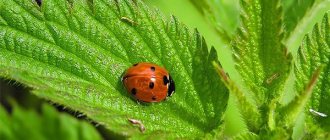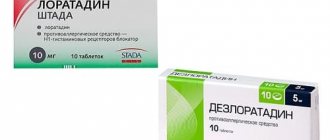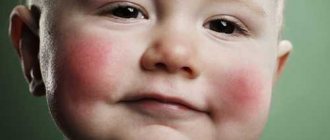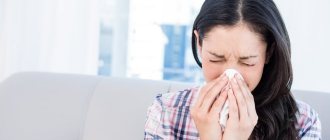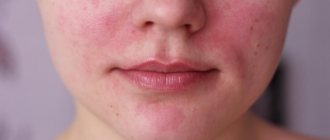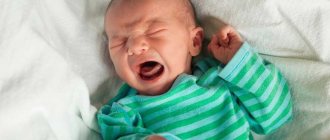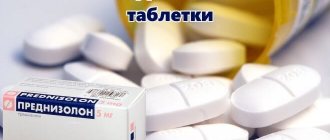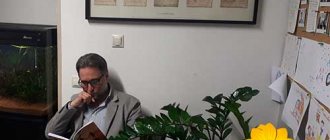Treatment type: Subcutaneous ALT
Diagnosis: cold allergy, animal allergy, allergic rhinitis
My son is 15 years old. We live in Moscow. I have had allergic rhinitis since I was 3-4 years old. From the age of 10, persistent bronchitis, severe allergic reaction to cats and guinea pigs. From the age of 12, an allergy to cold was added (in the wind and snow, the face blossomed with hives). At the age of 15, I became ill.
Mother of a 9 year old child
Treatment type: Subcutaneous ALT
Diagnosis: hay fever, bronchial asthma, allergic rhinitis
Child 9 years old. From 2.5 - tree polynosis, at 3 years - asthma, year-round allergic rhinitis. At the age of 5, herbal polynosis was added. Endless hospitals, attacks, inhalations through a nebulizer, lethal therapy in the spring, histamines without interruption.
Treatment type: Subcutaneous ALT
Diagnosis: hay fever, atopic dermatitis, bronchial asthma, allergic rhinitis
I am 33 years old, I have been an asthmatic with allergies since childhood, I was treated with many methods and ended up being treated with serious hormonal drugs.. Having seen a program on TV in which Nadezhda Yuryevna talked about the method of Autolymphocytotherapy, I decided to try it.
Svetlana 51 years old
Treatment type: Subcutaneous ALT
Diagnosis: bronchial asthma, cold allergy, angioedema
My name is Svetlana, I'm 51 years old. I met Nadezhda Yuryevna Logina by chance in December 2020 on the program “About the Most Important Thing,” where they conducted a cold allergy test, and decided to test myself. During the test I felt sick, I became...
Treatment type: Subcutaneous ALT
Diagnosis: hay fever, allergic rhinitis
On behalf of the entire Gushchin family, who live in Krasnogorsk, Moscow Region, with a disgusting environmental situation, we express our deep gratitude to a true professional, an experienced doctor and just a good person - Nadezhda Yuryevna Logina.Nadezhda.
Treatment type: Subcutaneous ALT
Diagnosis: atopic dermatitis
Very grateful ! We have been suffering from mixed allergies for 10 years. After 2 procedures, itching and skin dermatitis disappeared. there were 6 in total. We are waiting for a full recovery under the control of Nadezhda Yuryevna. A big THANK YOU to her! Yuzhno-Sakhalinsk Alexey.
Treatment type: Subcutaneous ALT
Diagnosis: bronchial asthma, angioedema
I underwent treatment with the ALT method consisting of eight procedures in January 2020. Unfortunately, it did not help me get rid of asthma, absolutely. I even think that my condition worsened because very severe urticaria appeared, sometimes with angioedema, which was in remission.
Yablochkina Lyudmila Viktorovna
Treatment type: Subcutaneous ALT
Diagnosis: bronchial asthma
I am 77 years old and have bronchial asthma. I was out of breath for a very long time and lost the joy of life. I went to many doctors, followed their recommendations, but I didn’t feel any better. I came to Nadezhda Yuryevna in a very serious condition, but after just one day.
Treatment type: Subcutaneous ALT
Diagnosis: hay fever, bronchial asthma, cold allergy, food allergy
I would like to thank Logina Nadezhda Yuryevna for developing the wonderful, and most importantly effective ALT method. I contacted Nadezhda Yuryevna in 2020. The symptoms were standard for allergies: hay fever, rhinitis, food and cold allergies. Also present.
Treatment type: Subcutaneous ALT
Diagnosis: food allergy, allergic rhinitis
My child has had food allergies since he was 4 months old. Over time, this allergy turned into allergic rhinitis, house dust and bed mites. He had a year-round persistent runny nose since he was 2 years old, now he is 6. We constantly sprayed hormonal sprays.
Treatment type: Subcutaneous ALT
Diagnosis: hay fever, atopic dermatitis, food allergy, allergic rhinitis
I have suffered from allergies in one form or another since childhood. At first it was an allergy to house dust: a stuffy nose indoors, a runny nose when going out into the cold in winter. This did not cause me any serious problems, but the klutz doctors in the “dashing 90s” did.
Treatment type: Subcutaneous ALT
For about 14 years in a row I suffered from a seasonal allergy to birch pollen, which began in school. I had to take a lot of antiallergic drugs, drops in the eyes, in the nose, and all this only muffled the acute symptoms. When I had the opportunity I took it.
Treatment type: Subcutaneous ALT
Diagnosis: hay fever, food allergy
Didn't help at all! Moreover, anaphylactic shock occurred a month later! And now the allergy manifests itself to something that was not there before! For food (there was none) – I’m constantly blushing! Hay fever started in March instead of May! In general, think a thousand times before.
Treatment type: Subcutaneous ALT
I learned about the ALT method by accident. Last year I saw Nadezhda Yuryevna’s speech on television, where she talked about the method of treating allergies - Autolymphocytotherapy, of which she is the author. I was interested in this because I suffered from hay fever.
Treatment type: Subcutaneous ALT
Diagnosis: bronchial asthma
In 2014, I took a course of ALT, the effect was amazing: food allergies went away and I stopped suffering from asthma attacks. And there were no symptoms for 2 years, I’m sure that this would have continued for years if I had not had ARVI in December and Fr. bronchitis.
Treatment type: Subcutaneous ALT
Diagnosis: hay fever, atopic dermatitis, cold allergy
My child and I came to Nadezhda Yuryevna in 2013. Before this, hay fever was treated for 5 years using the ASIT method (drops, injections) - without much result, during the period of exacerbation (from the end of April to the end of May) we went to the sea. The list of allergens was constantly increasing.
Solodovnikova Tatyana Yakovlevna
Treatment type: Subcutaneous ALT
Gratitude Dear Nadezhda Yuryevna! I express my sincere gratitude to you for creating a completely unique proprietary method for treating allergic diseases and immunological disorders, for your sensitive, attentive attitude!
Essence of the method
Autolymphocytotherapy (ALT) is a medical technique for combating allergic diseases, which helps restore immunological protection by using cells from one’s own body. Lymphocytes taken from venous blood are purified and then reintroduced.
Lymphocytes are immunocompetent cells that are responsible for recognizing infectious agents, which triggers a complex cascade mechanism aimed at eliminating inflammation and normalizing organ function.
The technique was patented in 1992 by allergist-immunologist Logina Nadezhda Yuryevna at the Moscow Medical Academy. Sechenov and is officially approved for use by the Federal Service for Surveillance in Healthcare.
After special treatment, immunocompetent cells retain all their antigenic properties (acquired upon contact with an allergen), but their administration does not provoke the development of a full-fledged hypersensitivity reaction.
In other words, the body “adapts” to such irritation, which leads to a gradual decrease in its susceptibility.
In fact, a person acquires artificial immunity to allergens, as in the case of vaccine prevention of infectious diseases. Naturally, the process is not lightning fast, and stable susceptibility is formed within approximately 2.5-3 years, however, the symptoms begin to level out already 3-5 months after the course of treatment.
On average, the course of treatment ranges from three to four weeks (twice a week, that is, 6-8 procedures). It is possible to repeat therapy after a period of time determined by the doctor.
The method of autolymphocytotherapy does not exclude simultaneous treatment for other diseases, while reducing the risk of developing side effects of pharmaceutical drugs.
Allergy treatment with ALT is carried out for the following diseases:
- Bronchial asthma;
- Allergic rhinitis;
- Hay fever;
- Atopic dermatitis;
- Hives;
- Recurrent Quincke's edema;
- Inflammatory chronic diseases of the female genital organs (vaginitis, colpitis), as well as some forms of infertility (secondary).
- Rosacea and acne.
It is also possible to perform ALT to safely eliminate age-related changes in the skin.
Allergy treatment. Autolymphocytotherapy is the most effective method in the treatment of allergies
14 November 2006 19:26 |
Dmitry Barkov The problem of treating allergies is relevant for modern medicine, since 20% of the population is more or less susceptible to allergic conditions. Moreover, there is a tendency towards an annual increase in the frequency of allergic manifestations, and therefore the need for allergy treatment.
There are several main directions in the treatment of allergies according to individually developed schemes:
1) Symptomatic basic therapy of diseases according to individually developed schemes;
2) Various options for immunotherapy using modern allergen vaccines and immunomodulators;
3) And also a relatively new method of treating allergies - autolymphocytotherapy. And utolimphocytotherapy (ALT or N.Yu. Logina’s method)
was developed in Russia and patented in 1992, it has no analogues throughout the world.
The last method of treating allergies will be discussed.
The essence of this method
Allergy treatment consists of the sequential introduction of the patient’s own blood lymphocytes, pre-treated by a certain method. The patient's lymphocytes, after this method of allergy treatment, retain all surface receptors that carry information about previously encountered allergens.
And with further administration to the patient, resistance to these substances develops. Autolymphocytotherapy, as it were, “adapts the body” to meeting an allergen, that is, immunity to substances that previously developed was formed: nasal congestion, lacrimation, sneezing, skin rash, and other manifestations of allergies.
Autolymphocytotherapy is used in the treatment of allergies of almost any nature
:
- bronchial asthma - exogenous, endogenous and mixed forms;
- allergic rhinitis;
- hay fever;
- atopic dermatitis;
- recurrent, including cold urticaria, Quincke's edema.
It should be noted the high efficiency
This method in the treatment of allergies, namely atopic dermatitis, various types of urticaria up to
98%
. In the hormonal-dependent form of bronchial asthma, using this method of treating allergies, the dose of glucocorticosteroids is significantly reduced and the course of the disease improves.
Duration of remission
When treating allergies with this method, it depends on the individual characteristics of the body and ranges from 2 to 5 years, and in some cases up to 10 years.
This method of treating allergies - ALT - has a limited list of contraindications
:
- pronounced exacerbation of the allergic process;
- asthmatic condition;
- pregnancy;
— malignant neoplasms;
— chronic diseases of internal organs in the stage of decompensation.
Autolymphocytotherapy has a number of advantages over
Another method of treating allergies - specific immunotherapy (
SIT
), let's compare these two methods:
1) The main disadvantage of SIT is its low effectiveness in the treatment of polyvalent allergies (allergy to 2 or more allergens), since it is impossible to introduce all allergens to achieve complete hyposensitization. And for autolymphocytotherapy, polyvalent allergy is one of the main indications. This method of treating allergies is especially indispensable in cases of sensitization to animal fur (since such an allergen for SIT has simply not yet been created).
2) The duration of treatment for SIT allergies is 3-4 months a year, 3 years in a row, which is quite problematic for a number of patients. For autolymphocytotherapy, 6 injections are sufficient (2 times a week), the procedure itself takes about 1 hour;
3) Also, in some cases, when carrying out SIT, the introduction of allergens is accompanied by a strong aggravation of the process, which does not allow a full course of allergy treatment. Autolymphocytotherapy is generally well tolerated. Sometimes there may be complaints about a slight increase in the symptoms of the underlying disease with this method of treating allergies (for example, with atopic dermatitis, increased skin rash; with hay fever, increased nasal congestion, itching of the eyelids, etc.). But these phenomena are easily corrected with medications and are not a contraindication to continued vaccination and allergy treatment.
For children
from 6 to 12 years, autolymphocytotherapy is used in exceptional cases for severe forms of allergic diseases. To prescribe this method of allergy treatment, a preliminary consultation with an allergist-immunologist is necessary to decide on the advisability of this procedure.
Depending on the changes identified, several allergy treatment options are offered:
— ALT course option “A” autolymphocytotherapy for allergic diseases;
— ALT course option “S” with activation of cells in a biomagnetic field by allergens;
In some cases, autolymphocytotherapy is an indispensable technique in the treatment of allergies.
So, if you are tired of eternal nasal congestion, the inability to fully inhale all the smells of life, and you have decided to treat allergies, then Autolymphocytotherapy is what will help you! Autolymphocytotherapy is the most effective method in the treatment of allergies.
Make the right choice and decide!
February 14, 2007 | 02:02
Cetirizine is enough for any allergy
In recent years, there has been a significant increase in the frequency and severity of allergic reactions: from allergic rhinitis and conjunctivitis to angioedema and anaphylactic shock.
The above conditions, as a rule, are not life-threatening, but require active therapeutic intervention, which must be effective, safe and well tolerated by patients.
Source: https://www.medicus.ru/allergy-immunology/specialist/lechenie-allergii-autolimfocitoterapiya-samyj-effektivnyj-metod-v-lechenie-allergii-26837.phtml
Varieties
It is worth noting that ALT is an acceptable method for children aged five years and older. Moreover, it is carried out throughout the year, excluding hay fever - in this case it is necessary to wait until the end of the flowering season. Several types of therapeutic treatment have been developed for various diseases, taking into account their characteristics.
Subcutaneous ALT
During this method, purified autolymphocytes (belonging to humans) are injected into the shoulder area (lateral surface) with a gradual increase in dose twice a week.
Adults need to perform 8 procedures, while children from 5 to 12 years old need up to 6.
A serious advantage of the therapy is its use in a wide range of allergic diseases, including in the case of their combination (for example, bronchial asthma and hay fever). This ALT method best helps with skin forms - atopic dermatitis, urticaria, Quincke's edema.
The concentration of antibodies (IgE) in the blood after 3 months of treatment is normalized in more than 70% of patients to various allergens - pollen, food, house dust. At the same time, the human body becomes resistant to respiratory infections (ARVI) - their frequency and severity decreases.
Endonasal ALT
Endonasal ALT is usually used when tablets, inhalers and sprays are ineffective. One course of treatment consists of 4 procedures, after which the symptoms almost completely disappear after a few months.
This technique is the only option for patients with hay fever during the flowering season, if treatment has not been carried out before it.
ALT is of great benefit in combination with ENT treatment of chronic rhinosinusitis, which is often complicated by hay fever. The technique makes it possible to achieve stable remission of the inflammatory process so that surgical intervention is possible (the only method to get rid of the cause of the disease).
The procedure is carried out “bloodlessly” using a YAMIK catheter (common in the practice of otolaryngologists) without prior special preparation of the patient. In this case, it is possible to simultaneously remove the purulent contents of the sinuses and deliver other medications.
ALT facial mesotherapy
The facial mesotherapy method is used to treat severe forms of acne and rosacea. It is also possible to combine it with intradermal injection of hyaluronic acid and lifting to rejuvenate the skin.
The procedure for intradermal administration of purified autolymphocytes is carried out by a specialist immunologist with the selection of an individual treatment regimen. A dermatologist-cosmetologist directly carries out mesotherapy. This comprehensive approach allows you to increase the asymptomatic period to six months.
With ALT mesotherapy, the risk of developing side effects of drugs is reduced, which is important for patients with concomitant allergies to drugs.
Lymphocytes are isolated from a small volume of blood taken from a vein, which are later activated outside the body. For this purpose, vitamin complexes, coenzymes or immunomodulators are added to them.
Intravaginal ALT (VALT)
An allergist-immunologist together with a gynecologist can prescribe intravaginal ALT. To do this, a number of studies are performed, the woman’s life history and illness are studied.
The procedure is carried out in a day hospital over a course of 4-6 visits. Treated autolymphocytes are also used, which are isolated from the patient’s venous blood and then injected intravaginally. It is absolutely painless and bloodless, so the technique is becoming more widespread.
It is used for protracted inflammatory diseases of the urogenital spectrum, as well as problems with pregnancy (immunological incompatibility of partners, miscarriage).
Positive aspects and advantages
An alternative method of immunological therapy for allergic diseases is ASIT, which has a number of disadvantages and limitations that are not present when performing ALT:
- The ASIT technique requires frequent purchase of medications containing special allergens (Fostal, Stallergen). Very often they are extremely difficult to find in the pharmacy chain. With ALT, the therapeutic agent is made from the patient’s own blood before each procedure.
- ALT acts comprehensively on many allergens at once, but with ASIT, an expensive drug is selected for each individually, and treatment is delayed for years without a high probability of success.
- ALT can be used in the treatment of severe lesions - multivalent allergies with high antibody levels, urticaria or atopic dermatitis. In some cases, the symptoms of pet hair intolerance are leveled.
There are also good results from the use of alat in the treatment of cross food allergies in hay fever; the risk of side effects when using various pharmaceuticals is reduced.
Treatment of various allergies using the ALT method has the following positive aspects:
- Short duration of treatment - 3-4 weeks, usually 2 procedures in 7 days;
- Chance of eliminating the symptoms of hay fever during the flowering season (endonasal ALT);
- According to the official website, the effectiveness of the method ranges from 70 to 90%, there are reviews from real people and medical centers;
- There is no need to hospitalize the patient;
- One procedure will take only 1-2 hours of the patient’s time, which allows you not to be interrupted from the work process. In official medical centers, specialists work until 19.30 on established days;
- In fact, therapy acts on the cause of the disease, and does not simply reduce its manifestations;
- A small number of contraindications;
- Availability of official patents and permission from the Federal Service for Surveillance in Healthcare;
- 1-2 weeks after the course of therapy, it is possible to plan trips to other climatic zones.
In some cases, it is possible to combine ALT with taking antihistamines, which is decided privately. In this case, the patient is advised to follow a standard hypoallergenic diet. Any self-medication must be agreed with a specialist.
Contraindications and cost of treatment
Like any medical treatment method, ALT has a number of the following contraindications:
- Severe immunodeficiencies (congenital or acquired, including HIV);
- Presence of cancer;
- Diseases of various organs and systems in decompensated chronic course;
- Children under 5 years of age;
- Pregnancy and lactation;
- Severe disorders of the psychoneurological spectrum.
Treatment is recommended to be carried out in medical institutions that are stated on the official website of the creator of the method. The cost of therapy varies depending on the type of ALT and the need for repeated courses.
Treatment type: Subcutaneous ALT
Diagnosis: atopic dermatitis
Very grateful ! We have been suffering from mixed allergies for 10 years. After 2 procedures, itching and skin dermatitis disappeared. there were 6 in total. We are waiting for a full recovery under the control of Nadezhda Yuryevna. A big THANK YOU to her! Yuzhno-Sakhalinsk Alexey.
Treatment type: Subcutaneous ALT
Diagnosis: bronchial asthma, angioedema
I underwent treatment with the ALT method consisting of eight procedures in January 2020. Unfortunately, it did not help me get rid of asthma, absolutely. I even think that my condition worsened because very severe urticaria appeared, sometimes with angioedema, which was in remission.
Yablochkina Lyudmila Viktorovna
Treatment type: Subcutaneous ALT
Diagnosis: bronchial asthma
I am 77 years old and have bronchial asthma. I was out of breath for a very long time and lost the joy of life. I went to many doctors, followed their recommendations, but I didn’t feel any better. I came to Nadezhda Yuryevna in a very serious condition, but after just one day.
Treatment type: Subcutaneous ALT
Diagnosis: hay fever, bronchial asthma, cold allergy, food allergy
I would like to thank Logina Nadezhda Yuryevna for developing the wonderful, and most importantly effective ALT method. I contacted Nadezhda Yuryevna in 2020. The symptoms were standard for allergies: hay fever, rhinitis, food and cold allergies. Also present.
Treatment type: Subcutaneous ALT
Diagnosis: food allergy, allergic rhinitis
My child has had food allergies since he was 4 months old. Over time, this allergy turned into allergic rhinitis, house dust and bed mites. He had a year-round persistent runny nose since he was 2 years old, now he is 6. We constantly sprayed hormonal sprays.
Treatment type: Subcutaneous ALT
Diagnosis: hay fever, atopic dermatitis, food allergy, allergic rhinitis
I have suffered from allergies in one form or another since childhood. At first it was an allergy to house dust: a stuffy nose indoors, a runny nose when going out into the cold in winter. This did not cause me any serious problems, but the klutz doctors in the “dashing 90s” did.
Treatment type: Subcutaneous ALT
For about 14 years in a row I suffered from a seasonal allergy to birch pollen, which began in school. I had to take a lot of antiallergic drugs, drops in the eyes, in the nose, and all this only muffled the acute symptoms. When I had the opportunity I took it.
Treatment type: Subcutaneous ALT
Diagnosis: hay fever, food allergy
Didn't help at all! Moreover, anaphylactic shock occurred a month later! And now the allergy manifests itself to something that was not there before! For food (there was none) - I’m constantly blushing! Hay fever started in March instead of May! In general, think a thousand times before.
Treatment type: Subcutaneous ALT
I learned about the ALT method by accident. Last year I saw a speech by Nadezhda Yuryevna on television, where she talked about the method of treating allergies - Autolymphocytotherapy, of which she is the author. I was interested in this because I suffered from hay fever.
Treatment type: Subcutaneous ALT
Diagnosis: bronchial asthma
In 2014, I took a course of ALT, the effect was amazing: food allergies went away and I stopped suffering from asthma attacks. And there were no symptoms for 2 years, I’m sure that this would have continued for years if I had not had ARVI in December and Fr. bronchitis.
Treatment type: Subcutaneous ALT
Diagnosis: hay fever, atopic dermatitis, cold allergy
My child and I came to Nadezhda Yuryevna in 2013. Before this, hay fever was treated for 5 years using the ASIT method (drops, injections) - without much result, during the period of exacerbation (from the end of April to the end of May) we went to the sea. The list of allergens was constantly increasing.
Solodovnikova Tatyana Yakovlevna
Treatment type: Subcutaneous ALT
Gratitude Dear Nadezhda Yuryevna! I express my sincere gratitude to you for creating a completely unique proprietary method for treating allergic diseases and immunological disorders, for your sensitive, attentive attitude!
Natalya and daughter Anastasia
Treatment type: Subcutaneous ALT
In December 2020, my daughter completed her first course of ALT. My condition improved significantly in the spring. Nose swelling, congestion, and lacrimation have decreased. Occasionally there was a need to take antihistamines. Anal signs indicate an improvement in the condition.
Bocharova Marina Nikolaevna, Ph.D., teacher
Treatment type: Subcutaneous ALT
Diagnosis: hay fever, atopic dermatitis, bronchial asthma, food allergy
I have been a patient of Nadezhda Yuryevna Logina since the fall of 2014, when I decided to undergo a course of immunocorrection with autolymphocytotherapy. By this time, I had developed a polyvalent allergy, and the periods of remission were very short: one and a half - .
Treatment type: Subcutaneous ALT
I express my gratitude to Doctor with a capital letter Nadezhda Yuryevna Logina for the ALT course! Since childhood, my son suffered from hay fever, every year the allergy worsened and no medications helped. A friend advised me to contact Nadezhda Yuryevna, Ph.D.
Rakitskaya Anna, 26 years old
Treatment type: Subcutaneous ALT
Diagnosis: hay fever, bronchial asthma, cold allergy, food allergy, allergic rhinitis
First of all, I would like to express my deep gratitude to Logina Nadezhda Yuryevna for the ALT method and her assistant, Irina Vladimirovna. I turned to Logina N. Yu. in 2020 with hay fever, rhinitis, food allergies, cold allergies and the initial stage.
Treatment type: Subcutaneous ALT
Diagnosis: atopic dermatitis
She was treated by Logina in January 2020. Everything seemed to be fine after the treatment, after six months the acne on my hands went away, the wet rashes didn’t bother me. But in September I had a severe allergy on my neck. Another type of rash appeared: small pimples.
Treatment type: Subcutaneous ALT
Diagnosis: hay fever, food allergy, allergic rhinitis
My name is Kirillova Tatyana, I am 26 years old. From early childhood she suffered from rhinitis and hay fever. Moreover, every year everything became worse and worse, and the worst thing happened in 2014, when 3rd generation drugs stopped helping. Working and living in such a village.
Treatment type: Subcutaneous ALT
Diagnosis: atopic dermatitis, bronchial asthma
I express my sincere gratitude to Nadezhda Yuryevna Logina for introducing a safe and effective method of treating allergies and asthma. My son (he is 12 years old) often suffered from colds, dermatitis, shortness of breath, constant runny nose and cough. Constantly on.
Morgacheva Svetlana, 43 years old
Treatment type: Subcutaneous ALT
Diagnosis: hay fever, bronchial asthma, allergic rhinitis
I turned to Logina N.Yu. at the end of 2014 with year-round rhinitis and the initial stage of bronchial asthma. She completed the first course of ALT, after which hay fever gradually passed and there was significant relief in the course of bronchial asthma, she refused.
Indications
Treatment of allergies using ALT methods is necessary for:
- allergies to mushrooms;
- allergic manifestations of rhinitis and hay fever;
- allergies to animal fur;
- atopic dermatitis;
- bronchial asthma;
- hives;
- allergies to certain foods;
- some forms of photodermatitis;
- polyvalent allergy;
- allergic reactions to cold;
- allergies to lactobacilli and E. coli.
This measure is considered effective in all cases, except for allergic reactions to pharmacological agents and bites of various types of insects.
Autolymphocytotherapy: real patient reviews about the treatment of allergies in Nadezhda Yuryevna Logina
On this page you will find reviews from patients who have undergone one or more courses of autolymphocytotherapy under the guidance of allergist-immunologist Nadezhda Yuryevna Logina.
Each allergy patient review includes an assessment of the treatment, the type of method used (subcutaneous or endonasal ALT therapy), and the diagnosis.
Unlike other sites, all reviews about autolymphocytotherapy on this page are real!
95% of them were collected from 2012 to 2020 from real patients from clinics where ALT was performed. 5% of reviews were left by patients through this site.
As a result, the largest array of real reviews about autolymphocytotherapy in RuNet has been collected here.
You can read the opinions of doctors about autolymphocytotherapy from the medical centers where the method was introduced at the link.
If you have undergone a course of autolymphocytotherapy as a patient, you can leave your opinion by clicking on the “add review” link. All patient reviews are moderated before being published on the site.
PS Regarding negative messages left through the site: we also post them if we can confirm the described story through our medical channels.
Make an appointment with the author of the ALT method!
Allergist-immunologist Nadezhda Yuryevna Logina will see you in Moscow on a weekday
• A unique proprietary method of treating all forms of allergic diseases in adults and children;
• The method was developed at the Moscow Medical Academy named after. Sechenov;
• Successfully used since 1993 (for 25 years already);
• Authorized by the FEDERAL SERVICE FOR SUPERVISION IN THE FIELD OF HEALTH AND SOCIAL DEVELOPMENT;
• Protected by Russian Federation patents for inventions;
• The ALT method treats the cause, not the symptoms, of allergies.
Advantages of the ATL technique
Unlike other methods of treating allergic diseases, autolymphocytotherapy has the following advantages:
- Compared to such a popular method of therapy as ASIT, the ATL method is able to treat allergic reactions that are caused by several irritants at once;
- as a result of the use of ATL, side effects very rarely occur; if they occur, they are easily blocked with the help of medications and do not cause any dangerous consequences;
- the course of treatment does not exceed five weeks, and the remission period lasts from 3 to 5 years, and sometimes all 10;
- this technique does not require the use of any medications other than saline;
- This therapeutic measure is not expensive and does not require the purchase of rare medications.
The course of treatment with autolymphocytotherapy ranges from 3 to 5 weeks
Treatment regimen for autolymphocytotherapy
Outside the flowering season
During the flowering season
Appointment with an allergist-immunologist, initial consultation
Examination (previously conducted examinations in other medical institutions are taken into account)
A course of treatment using subcutaneous autolymphocytotherapy 2 times a week. A total of 6-8 procedures (3-4 weeks) under medical supervision
Normalization of the body's sensitivity to allergens occurs within 1-6 months after the course of treatment.
Rehabilitation takes place under the supervision of an allergist-immunologist without additional payment.
Appointment with an allergist-immunologist, initial consultation
Consultation with an ENT doctor
Examination (previously conducted examinations in other medical institutions are taken into account)
A course of endonasal ALT 2 times a week. A total of 4-6 procedures (2-3 weeks) under the supervision of an allergist-immunologist
Improvement occurs already after 2-3 procedures and lasts until the end of the flowering season.
Where is autolymphocytotherapy performed in the Russian Federation?
Speech by allergist-immunologist N.Yu. Logina. on TV channel "Russia 1"
Problems in treating allergies
Allergy is an unusual reaction of the body to factors that do not initially have a pathogenic effect: plant pollen, indoor microflora, food products, etc. Over the past 20 years, the incidence of allergies has increased 3-4 times. Today, every fourth inhabitant of the Earth suffers from it. And this figure continues to grow steadily.
Unfortunately, these days, allergies can develop even in infants and the elderly, who until recently were not part of the group of allergy sufferers. In 2020, allergies can start suddenly in anyone - both adults and children.
Medicine has learned to successfully combat allergy symptoms, but it has not been possible to fully control the nature of the allergic reaction. The most common treatment method, allergen-specific immunotherapy (ASIT), unfortunately, is not a panacea for all types of allergic reactions. The use of this therapeutic technology has a number of limitations.
Due to the lack of therapeutic allergens, allergies to the epithelium of cats and dogs are not treated with ASIT. Specific immunotherapy is not used for atopic dermatitis, cold allergies and urticaria. Simultaneous treatment with several ASIT drugs is also impossible.
To circumvent the limitations of ASIT therapy, a new method of treating allergies was developed - autolymphocytotherapy.
Autolymphocytotherapy (ALT) in the treatment of allergies
The fight against allergies is a very pressing issue in our time, because according to statistics, up to 40% of the world's population are allergic. Medicine does not stand still; new methods of treating allergic diseases are being developed. The article will discuss one of these methods - the method of autolymphocytotherapy (ALT).
ALT reduces the sensitivity of the immune system to all factors that previously caused an allergic reaction in the patient.
Autolymphocytotherapy (ALT) is a method of treating allergies by administering to the patient his own lymphocytes (the main cells of the immune system), previously purified by physical methods.
After completing the course, remission lasts from 3-5 years.
The method was developed in Russia and patented in 1992. It is also used in the treatment of infertility and inflammatory processes.
Website of Logina Nadezhda Yuryevna, author of the ALT method - https://altherapy.ru/
Below in the article you will also find recordings of programs with Nadezhda Yuryevna, where she will personally talk about her method.
The principle of treating allergies with autolymphocytotherapy
Logina Nadezhda Yurievna - author of the method
Venous blood is taken from the patient (5-8 ml), from which leukocytes are then isolated, then they are purified by physical manipulation from foreign particles (erythrocytes, platelets, plasma proteins), diluted with saline and injected back into the patient.
Leukocytes retain on their surface all the receptors that carry information about allergens previously entering the body. They affect the immune system, reducing its susceptibility to allergic factors. The consequence of this is a decrease or complete disappearance of allergy symptoms.
In general, the effect of autolymphocytotherapy is somewhat similar to vaccination, as well as allergen-specific immunotherapy (ASIT), another used method of treating allergies.
The difference between autolymphocytotherapy and ASIT
- ASIT allergen preparations (pollen, epithelium, enzymes) prepared industrially
- Autolymphocytotherapy uses the patient’s own blood and the drug is prepared individually for each person.
The course of autolymphocytotherapy lasts about 3-5 weeks and most often includes 4-6 procedures.
Endonasal ALT using a YAMIK catheter
There are different types, differing in the method of drug administration and used in the treatment of diseases of a certain nature (examples of diseases are indicated in brackets):
- Subcutaneous (hay fever, cross food allergies, bronchial asthma, allergic rhinitis, atopic dermatitis);
- Intravaginal (infectious vaginitis or due to opportunistic flora, infertility of immune origin, genital herpes, candylomas, bacterial vaginosis);
- Endonasal (allergic rhinitis with allergies to lower fungi, hay fever with contraindications to allergen-specific immunotherapy, rhinosinusitis);
- Mesotherapy (intradermal) (rosacea, acne).
When should ALT be used?
The main medical indications for autolymphocytotherapy are listed below:
Reviews about the ALT procedure from the official website
- allergic rhinitis and hay fever;
- allergy to mushrooms;
- allergy to animals;
- allergy to E. coli and lactobacilli;
- atopic dermatitis;
- bronchial asthma with polyvalent sensitization;
- hives;
- some forms of photodermatitis;
- food allergies;
- polyvalent allergy;
- cold allergy.
How is autolymphocytotherapy performed?
Therapy is carried out in an allergy hospital or on an outpatient basis in an allergy office by an immunologist-allergist.
Subcutaneous
The course of autolymphocytotherapy lasts up to 4 weeks, the procedure for preparing and administering one injection lasts about an hour.
- The course of treatment for adults is 8 procedures with an interval of 2 procedures/week;
- For children, the course of treatment is 6 procedures 2 times/week.
The number of injections, dosage and duration depend on the chosen course regimen.
Endonasal
The process of using the YAMIK catheter
The course of treatment consists of 4 procedures. The treatment regimen and dosage are determined by the attending physician.
The procedure is performed using a YAMIK catheter (this catheter is widely used in ENT practice for rinsing the nasal sinuses and administering medications).
The therapeutic effect of autolymphocytotherapy
The author of the method claims that after successfully completing the course, the manifestations of allergies are significantly reduced or completely disappear, and remission lasts from 2 to 5, and in some cases up to 10 years.
The best therapeutic effect is manifested in the treatment of skin allergic diseases, for example, with atopic dermatitis it reaches 98%, and with cold allergies, all symptoms of the disease disappear in 88.6%.
Autolymphocytotherapy is least effective in the treatment of allergies to stinging insect bites and to pharmacological drugs.
Advantages of autolymphocytotherapy
ALT has many advantages compared to the more common ASIT and symptomatic methods of treating allergies:
- Unlike ASIT, autolymphocytotherapy is effective against allergies caused by several allergens;
- Side effects are very rare, mild and easily blocked by medications;
- The short course duration is up to five weeks, with remission up to 5 years;
- ALT does not use any pharmaceuticals other than saline;
- There is no need to search for and purchase rare and expensive medications, as in the case of ASIT. Therefore, the price of a course of autolymphocytotherapy is on average one third less than a course of ASIT.
Contraindications
Despite so many advantages and high efficiency, autolymphotherapy, like any treatment method, has contraindications:
- Does not apply to children under 5 years of age;
- Pregnancy, breastfeeding;
- Oncological diseases;
- Exacerbation of chronic diseases of internal organs;
- Severe diseases of the immune system.
Cost of the ALT procedure and where it is done
| Name of procedure | Cost of one ALT procedure, rub. | Required number of procedures in one course of treatment |
| Subcutaneous | 3700 | 6-8 |
| Endonasal | 6500 | 4 |
| Facial mesotherapy | 5000 | 4 |
| Intravaginal | 6500 | 5 |
Where is the ALT procedure performed?
The method was officially introduced in 5 clinics in Moscow and the Moscow region, as well as in clinics in Kazan. Doctors and laboratory assistants trained there under the personal supervision of N.Yu. Loginova and have the appropriate certificates.
Please note, other honey. institutions other than those presented below have no relation to ALT using the N.Yu. method. They don’t have Loginova.
Clinics of Kazan
Alas, if the procedure is necessary, but it is not carried out in your city, there is only one way out: go to Moscow or Kazan and rent housing there for the duration of the procedure.
People's opinions about the ALT procedure
Before signing up for an autolymphocytotherapy procedure, many people look for reviews about this treatment method on the Internet. So the portal’s editors asked themselves this question and decided to help our readers with collecting information. First of all, we studied the reviews on the official website dedicated to the ALT method.
Positive reviews from cured patients of Nadezhda Yuryevna Logina are present in abundance, but we showed some skepticism and decided to read absolutely all the reviews (at that time there were already more than 50 of them).
Here are the conclusions we came to:
- Indeed, most patients felt better after the first course of ALT. Many patients underwent repeated courses of therapy. This is explained by the fact that one course is not enough for a complete cure.
- Each case is individual and this is often discussed with the doctor in advance, and a treatment plan is drawn up for years to come.
Sometimes patients note that some time after completing treatment they have other symptoms, usually when they change their place of residence, while taking any medications, or after trying something from food.
However, even such a well-known method of treating allergies as ASIT (allergen-specific immunotherapy) does not provide a 100% guarantee of cure.
